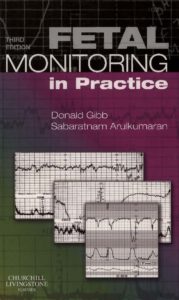Evans M. I. Prenatal Diagnosis
A comprehensive reference on diagnosis and evaluation of reproductive risks and genetically related high-risk pregnancies. Authored by international group of experts, this book is organized according to diagnostic method, source of reproductive risk, and system under evaluation. Features the latest imaging technology, a review of genetics, molecular biology, and cytogenetics, and special chapters on counseling, cross-cultural, legal, and ethical issues.
Falage W. A. Vulva Anatomy Physiology and Pathology
PART I. ANATOMY AND PHYSIOLOGY 1. Anatomy of the Vulva. 1 Aikaterini Deliveliotou and George Creatsas Introduction. 1 Embryology of Vulva. 1 Anatomy of the Vulva. 2 Conclusion. 7 References. 7 2. Tissue Structure and Physiology of the Vulva. 9 Miranda A. Farage and Howard I. Maibach Introduction. 9 Variations in Epithelial Structure. 12 Blood […]
Fitzgerald C. Musculoskeletal health in pregnancy and postpartum
Providing clinicians with a comprehensive, evidence-based summary of musculoskeletal health in pregnancy and postpartum, this is the first book of its kind to describe the physiologic changes, prevalence, etiology, diagnostic strategies, and effective treatments for the most common musculoskeletal clinical conditions encountered during this phase of life. Lumbopelvic pain, upper and lower extremity diagnoses, labor and delivery considerations, including the impact on the pelvic floor, and medical therapeutics will be discussed. Additionally, the importance and influence of exercise in pregnancy, the long-term implications of musculoskeletal health in pregnancy and current and future directions for research will be addressed. The childbearing period is a time of remarkable reproductive and musculoskeletal change, predisposing women to potential injury, pain, and resultant disability. Musculoskeletal Health in Pregnancy and Postpartum offers musculoskeletal medicine specialists, obstetricians and any clinicians involved in the care of pregnant or postpartum women the tools necessary to prepare for, treat and prevent these concurrent injuries during an already challenging time.
Gabbe S. G. Obstetrics. Normal and problem pregnancies.
After 30 years, Obstetrics: Normal and Problem Pregnancies remains your go-to choice for authoritative guidance on managing today’s obstetric patient. International experts put the latest knowledge in this specialty at your fingertips, with current and relevant information on everything from fetal origins of adult disease, to improving global maternal health, to important topics in day-to-day obstetrical practice. Highly readable, well-illustrated, and easy to understand, this bestselling obstetrics reference is an ideal tool for residents and clinicians.
Gambling D. R. Obstetric Anesthesia and Uncommon Disorders
This new edition of Obstetric Anesthesia and Uncommon Disorders provides a convenient resource for practitioners suddenly faced with a parturient who has an unusual medical or surgical condition. The book considers the impact of a condition on pregnancy, labor and delivery, or the fetus and the impact of pregnancy on a condition, or the effect of therapy for the disorder on the fetus or neonate. Case reports and experience from the world literature, and clinical advice from many specialists, have been drawn together by an international team of editors and contributors who are leading experts in the field. Clear, concise management guidelines and algorithms are provided, and each chapter is written from the viewpoint of the obstetric anesthesiologist. Fully updated, with new chapters on Chronic pain in pregnancy and Malignancy and pregnancy, Obstetric Anesthesia and Uncommon Disorders continues to be an invaluable resource for any anesthesiologist involved in the clinical management of these complex patients.
Gibb D. Fetal monitoring in practice
Simple, direct and practical, this popular book has been comprehensively updated to cover recent guidelines and procedures. It offers a practical and accessible approach to fetal monitoring, to ensure both safe delivery and recognising the emotional needs of the mother and family. Essential concepts are presented in an accessible manner, well illustrated with real case histories and heart-rate patterns.
Gibb D. Fetal monitoring in Practice
Prepared by editors of international renown, the latest edition of Fetal Monitoring in Practice has been fully updated throughout and now presents the latest information in colour! New features include an expanded international author team, the latest guidelines from NICE and FIGO, updated information on clinical assessment and medical litigation, and a new chapter on competency testing in CTG interpretation prior to practice.
Goer H. Optimal Care in Childbirth
What practices and policies best promote safe, healthy, satisfying labor and birth? What harms do routine or frequent use of tests, procedures, and restrictions introduce? What nonmedical factors drive the current maternity care system? Meticulously documented, Optimal Care in Childbirth: The Case for a Physiologic Approach pulls back the curtain on medical-model management of childbirth. «This should be a text book for everyone in maternity care!» — Penny Simkin, Co-author of the Labor Progress Handbook. «This long awaited book is a marvel. It is a ‘must have’ resource not just for childbirth educators, nurses, obstetricians, and women, but for hospital administrators, insurance companies, and policy makers.» — Judith Lothian, PhD, RN. «Goer & Romano have given the maternity care community a gift in their robust examination and synthesis of the evidence supporting best ways to achieve optimal, physiologic birth for women and infants.» — Holly Powell Kennedy, PhD, CNM, Varney Professor of Midwifery, Yale School of Nursing. «Optimal Care in Childbirth is a long overdue and very important contribution that will lead to a more safe, sane, and satisfying pregnancy care system.» — Steve Calvin, MD, MFM, Co-chair, Human Rights and Health Program, University of Minnesota School of Public Health.
Gomel V. G. Female Genital Prolapse and Urinary Incontinence
Genital prolapse, or pelvic organ prolapse, occurs when the structures of the pelvis protrude into the outside vaginal canal. Genital Prolapse and Urinary Incontinence is the first book of its kind dedicated specifically to genital prolapse and is filled with every different type of prolapse, including the bladder, uterus, rectum, and the mucosal fold containing the intestine. Covering all aspects of this defect while emphasizing the managed care of genital prolapse, this text also explores both surgical and non-surgical treatments, which include methods for the diagnosis and treatment of all abnormalities.
Gompel C. Patology in gynecology and obstetrics
As in our three previous editions, the purpose of this edition of Pathology in Gynecology and Obstetrics continues to be to provide a concise and practical reference, with thorough bibliographic documentation, of the complex field of gynecologic and obstetric pathology for practitioners and trainees in both pathology and obstetrics and gynecology. We have also found that our previous editions have been useful in the education of those undergraduate medical students who desire more than the very brief introduction to this field provided by most textbooks of general pathology, and we hope that this edition will continue to serve that purpose.










